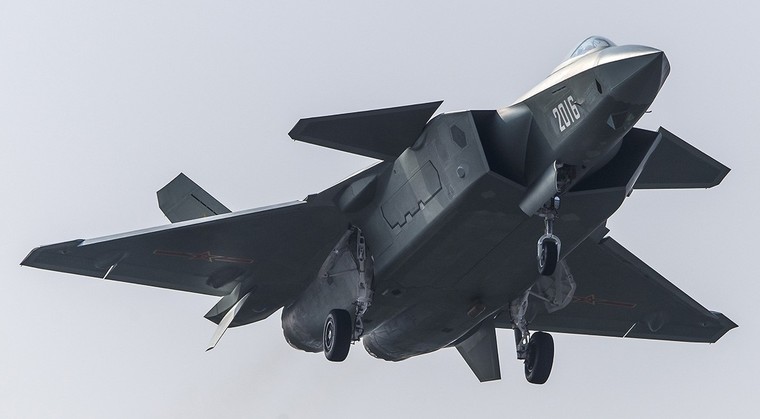
Two six -generation China military aircraft have been observed in flight operations in recent weeks, according to records released on social networks and specialized press reports.
The maneuvers were recorded near the headquarters of Chengdu Aircraft Industry Corporation (CAIC) in the southwest of the country, and Shenyang Aircraft Corporation (SAC) in the Northeast.
The models, not yet officially recognized by the Chinese authorities, have been identified by analysts such as J-36 and J-50, respectively.
Further released images show the J-36 fighter by performing closed curves and other high complexity maneuvers in the Sichuan Province of Chengdu.
Previous videos already indicated aircraft tests on highways near CAIC base at low altitudes for conventional military operations.
Defense experts observe that the aircraft’s format refers to structures inspired by Ginkgo leaf, associated with a computed flight control system capable of performing advanced maneuvers.
“The aerodynamics of these small flaps significantly increases the aircraft’s lateral moving capacity. For this to work, China’s flight control programming should already be at a world leadership level,” said military commentator Song Zhongping.
According to him, the final version of the aircraft should have vector propulsion, which would reinforce its maneuvering capacity.
The latest records indicate the presence of a high central cabin, dorsal air inlets and three engine exhaust, as observed in images captured by drivers near the installation.
Tests in Northeast of China
The SAC, based in Liaoning Province, also intensified the tests of its aircraft. The model, informally identified as J-50, was caught in high definition images in early April and in videos dated 8 and 16 of the same month.
According to the US military website The War Zonethe new J-50 records show a lambda wing and indicate the presence of thrust vectoring engines.
The images also revealed the ends of mobile wings and side weaponry compartments, similar to those of the American F-23 and the Chinese J-20.
The design of the supersonic entry without deviation (DSI) of the J-50, integrated into the nose of the aircraft, also caught the attention of international observers.
The trapezoidal configuration around the bulge of the air inlet was described as more refined than that used in the F-22. No official comments about the model has been issued by the Chinese authorities so far.
Characteristics and Context
Both Chinese models share structural characteristics considered compatible with what is expected of sixth generation aircraft, such as a design without tail and high stealth.
Observers indicate that the two prototypes were first viewed on December 26, a date that coincides with the anniversary of leader Mao Zedong, although this relationship was not confirmed.
Chinese authorities have not yet officially announced the projects nor disclosed technical specifications.
However, sources of the defense sector consider that prototypes signal advances in the country’s military technological development, especially in areas such as automated flight control, vector propulsion and low radar detectability.
US reaction and development
Chinese movements occur at the same time as the United States also advances in next generation aircraft projects.
On March 21, former President Donald Trump stated that Boeing is developing the F-47 fighter, classified as sixth generation, with experimental tests conducted reserved in the last five years.
The American Navy is also involved in parallel programs for new fighters. The US government has not disclosed technical details of the F-47, but sources linked to the defense sector state that the project is part of initiative NGAD (Next Generation Dominance), aimed at maintaining air superiority in high intensity conflict scenarios.
Geopolitical implications
Tests with sixth generation aircraft gain relevance in the context of strategic tensions between Beijing and Washington.
The two powers have maintained divergent positions on topics such as safety in Indo-Pacific, Taiwan, International Trade and Advanced Armaments. The parallel advance in military aviation programs is observed by analysts as part of the dispute for technological superiority and dissuasive ability.
Recent sightings of Chinese aircraft indicate intensification in flight tests and may represent a new phase in the country’s defense programs.
Images widely released by social networks and specialized vehicles suggest that prototypes have entered the stage of aerodynamic validation and systems, although not yet official confirmation of schedules for series production or incorporation into the Chinese Armed Forces.
Meanwhile, western programs are still under development, with the forecast that the first US operational models will be presented in the next decade.
The monitoring of Chinese tests should continue to be carried out by intelligence agencies and international military observers, amid the growing global focus on new generation air combat capabilities.
With information from SCMP
Source: https://www.ocafezinho.com/2025/04/21/china-intensifica-testes-com-cacas-de-sexta-geracao-com-alto-poder-de-manobra-e-manda-recado-aos-eua/

